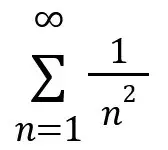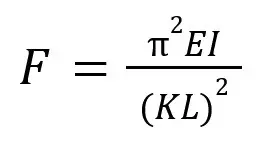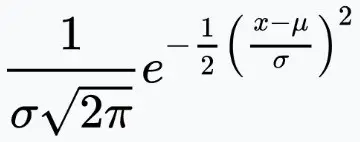By now, every math student has likely heard of pi. Did you ever wonder why all the fuss is made over some number? Let’s dig in and figure out why!
First, a few of the basics: The number pi is denoted by the lowercase Greek letter π. The number π is irrational, meaning that it cannot be written as the ratio of two integers.

Because it’s an irrational number, there is no repeating pattern of digits, even when expanded to lots of digits. (more on that later.) Calculated to 39 decimal places, here is π:
π ~ 3.141592653589793238462643383279502884197
Math students will often use the approximation 3.14 to represent π. These days, most calculators also have a key for π.
This is quite helpful if you want to use a more accurate representation of π. Sometimes, you’ll see the fraction 22/7 to represent π, but remember this too is an approximation.
What is π?
| The number π is the ratio of the circumference of a circle to the diameter. |
The symbol π was first introduced in 1706 by the Welsh mathematician William Jones. Jones published a work Synopsis palmariorum matheseos which translates to A summary of achievements in mathematics in which the symbol π was used for the first time in a scientific work.
One of the main reasons for using a Greek letter to represent π is because even if we used an approximation of π to 1,000 places, it’s still just that: an approximation. Jones recognized the need to use a symbol to represent the exact number π.
A few decades later, the Swiss mathematician Leonhard Euler made the symbol π even more popular.
Source: theguardian.com William Jones
Uses of π in mathematics:
Most Geometry students are likely aware of the importance of π in calculating the area and the circumference of a circle. Let’s review:
| Area of a circle: A = πr2 where r is the radius of the circle. Circumference of a circle: C = 2πr or C = πd where r is the radius of the circle and d is the diameter of the circle. |
Using the second form of the circumference of a circle, we can use a little algebra to obtain the common definition of π: the ratio of the circumference of a circle to its diameter.
- C=πd
- C/d=π
- π=C/d

No matter what the size of the circle is, the ratio of the circumference of the circle to its diameter will always be equal to π! These equations are extremely important in geometry.
Example
The radius of a circle is 5 units. Find the area and circumference of the circle.
Solution
To find the area of the circle, we plug in our radius of 5 to the formula:
- A = πr2
- A = π(5)2
- A = 25π
The area of the circle is 25π square units. It’s worth remembering that this is an exact answer. As soon as we use 3.14 for π, it becomes an approximation. Mathematicians like precision, so keep this in mind!
To find the circumference of the circle, we use the formula C = 2πr.
- C = 2π(5)
- C = 10π
The circumference of the circle is 10π units.
The ubiquitous π
One of my college professors remarked “oh the ubiquitous π” everytime π popped up in various equations. Sure enough, once he said that, I started noticing how often π appears in math and science! Here are some examples:
Volume and surface area of solids
The surface area and volume of solids often involve π if the solid has a circular component to it.
| The volume of a right circular cone: V= πr2h/3 The volume of a right circular cylinder: V=πr2h The volume of a sphere: V=4πr3/3 The surface area of a sphere: SA=4πr2 |
Example
Calculate the volume of a right cylinder with a radius of 4 cm. and a height of 12 cm.

Solution
Using the formula for the volume of a cylinder V=πr2h we can plug in r = 4 cm and h = 12 cm.
- V=πr2h
- V=π(4)2(12)
- V=π*1*12
- V=192π cm3
Hence, the volume of the cylinder is 192π cm3.
Sum of an infinite series
The sum of the infinite series

converges to a number involving :
1+1/4+1/9+1/16+1/25 +…+1/n2= π2/6
Kepler’s third law of planetary motion
This equation shows that the further a planet is from the sun, the slower its orbital speed, and vice versa.


where a is the elliptical semi-major axis, T is the orbital period in days, G is the gravitational constant, and M is the mass of the sun.
Source: wikipedia.org Kepler’s laws
Buckling principle
In structural engineering, buckling is the sudden change in shape under load, such as the bowing of a column under compression. Euler’s principle for the buckling of a vertical column uses :

where F is the maximum or critical force, E is the modulus of elasticity, I is the smallest area moment of inertia of the cross section of the column, K is the column effective length factor, whose value depends on the end support of the column, and L is the unsupported length of the column.
Source: wikipedia.org Buckling
Probability
It turns out that the probability that a randomly selected integer has repeated prime divisors is equal to 6/π2 (the reciprocal of the infinite sum we saw earlier). Pretty cool, right?
(You can also see π make an appearance in the probability distribution function for a normal distribution, shown below.)

Source: Jonathan M. Borwein and Peter B. Borwein, Scientific American, 1988.
The history of pi
As early as 2000 BC, the Babylonians calculated that the area of a circle is equal to the square of the radius which gives a value of π = 3. A later Babylonian tablet had π as approximately equal to 3.125.
Not bad for an ancient civilization, right? Around 1650 BC, the Egyptians used an approximation of π as 3.16045.

Around 250 BC, the Greek mathematician Archimedes used a method for theoretically calculating the value of π. Prior to this, mathematicians used close approximations to π. Archimedes method went something like this:
Archimedes recognized that the length of the perimeter of a polygon inscribed in a circle is less than the circumference of a circle. Similarly, the perimeter of a polygon circumscribed about a circle is greater than the circumference of a circle.

Therefore the circumference of a circle must lie somewhere between these values. Archimedes found that the value of π must lie between 3 & 1/7 and 3 & 10/71.
Archimedes also proved that the ratio of the area of a circle to the square of its radius is equal to the constant π.
After Archimedes, Chinese, Indian, and Arab mathematicians were able to calculate π using lots of calculations but did not improve upon Archimedes theory and method for calculating π.
For example, in 263 AD, the Chinese mathematician Liu Hui believed that π was equal to 3.141014. In 1400, the Persian astronomer Kashani calculated π correctly to 16 decimal places, a truly astounding accomplishment considering how long ago this was!
It wasn’t until the 17th century that Isaac Newton was able to vastly improve upon the calculations by using his Binomial Theorem. He was able to calculate π accurately to 16 decimal places using a more efficient method than his predecessors.
After Newton’s breakthrough, it took a long time before any major advances were made in calculating π.
In the early twentieth century, the Indian mathematician Srinivasa Ramanujan developed an effective way to compute π. His method used the reciprocal of π. It was so efficient that the method was incorporated into computer algorithms for calculating π.
Source: thevarsity.ca
In 2022, Google Cloud set the world record for calculating π to the most digits to date. It took 157 days to compute, lots of storage space, and many computers to compute π to 100 trillion places using the Chudnovsky algorithm.

Google Cloud also held the record in 2019 but were able to break their own record because the “bandwidth on Google Cloud’s infrastructure increased by 600%.” It’s worth mentioning that the 100 trillionth digit is 0!
Source: pcmag.com
Even the Bible has a reference to π! In 1 Kings 7:23, the measurements for a round basin are given as
“ten cubits from brim to brim, circular in shape, and its height was five cubits, and it was thirty cubits in circumference.”
https://www.biblegateway.com/passage/?search=1+kings+7%3A23&version=NASB
Notice, when we divide the circumference thirty cubits by the diameter (ten cubits from brim to brim) we get 3, which is an approximation for π!
As you go through life, try to keep watch for occurrences of π. There is a reason that scientists and mathematicians have been fascinated with this number. It’s so important it gets its own national holiday on March 14 or 3/14 – Pi Day.
I hope you found this article helpful. If so, please share it with someone who can use the information.
Don’t forget to subscribe to our YouTube channel & get updates on new math videos!
About the author:
Jean-Marie Gard is an independent math teacher and tutor based in Massachusetts. You can get in touch with Jean-Marie at https://testpreptoday.com/.


